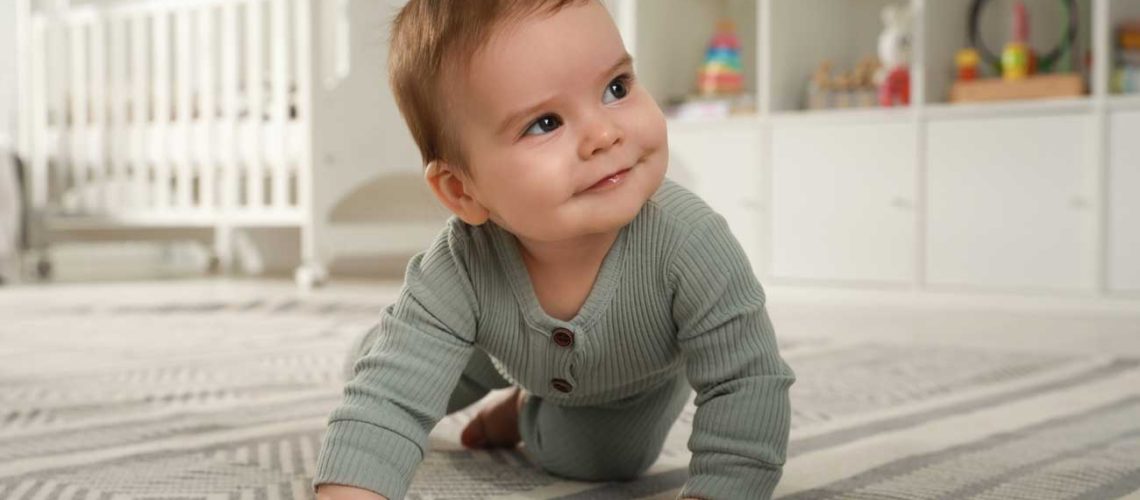Until now, you have probably noticed that your baby sleeps best when they are close to you, or in your arms. This is where they feel the happiest, safest, and most secure and is why many babies struggle to sleep in a cot.
Whether you decide to move your baby into a cot and/or their own room at 6 months, or to safely co-sleep for longer, with them near or next to you, it’s your choice. All families and all babies are different and it’s important to trust your gut instinct as a parent and do what feels right for you and your baby.
How to get your baby used to their cot
Remember, it’s separation they don’t like not the cot.
Settling up for success….
Before you introduce the cot as a new place to sleep, it’s important that your baby starts to see it as a safe and happy place. It can be used as space where you can have small sessions of play, or share books and toys.
Short bursts of time in the cot during waking hours are enough to start with. If they don’t like being put in there at first, take them out and try again another time. Once your baby gets to know it as a familiar space, they will feel more secure and comfortable and you can start to put them in the cot for a nap – often the first nap of the day is the easiest for this. It can also help if you have slept with the sheet in your bed, before it gets put into the cot, as your smell will help to settle your baby and reduce any feeling of separation.
How do I get my baby used to sleeping in their own room
Getting your baby used to their new room from early on is key to supporting their transition. Even though they will be spending their early months sleeping in your room with you, there are many opportunities to make sure that their own room feels as familiar as other rooms in the house. You can use the room as a play space, a changing place and a place to feed your baby or to share
books and snuggles in a cosy chair. In this way, you are building up happy associations with the cot and room.
When you first move your baby into their own room, try introducing naps in there first. You can also lie quietly on the floor, or on a mattress next to the cot, so they have the reassurance of knowing that you are nearby as they go to sleep.
Cot safety
It’s vital that your baby’s sleep environment is safe for them. There are several key things to remember when setting up your baby’s cot:
- Baby sleeping bags are safer than blankets, as they reduce the risk of suffocation and are a more effective way of keeping a consistent body temperature. If blankets are used, they should be specially designed for your baby’s age and with holes in.
- Put your baby to sleep on their back, with their feet at the bottom of the cot and do not use a pillow.
- While cot bumpers and mobiles may look attractive, they should not be put in, or near, to the cot. They can be dangerous to your baby, with potential to cause suffocation, strangulation or other injury.
- Check that the room is cool enough, it is often best to have it between 16 and 20 degrees Celsius.
Creating a calm and positive space for your baby to sleep, with healthy routines from the start, is a great basis for them to become good sleepers into childhood and adulthood. If you would like any support with your baby’s sleep, please get in touch www.happynightsbaby.co.uk
Jo-Anne Dietrich, of Happy Nights, is a qualified nursery nurse, maternity nurse and experienced sleep trainer, helping families to sleep better.










